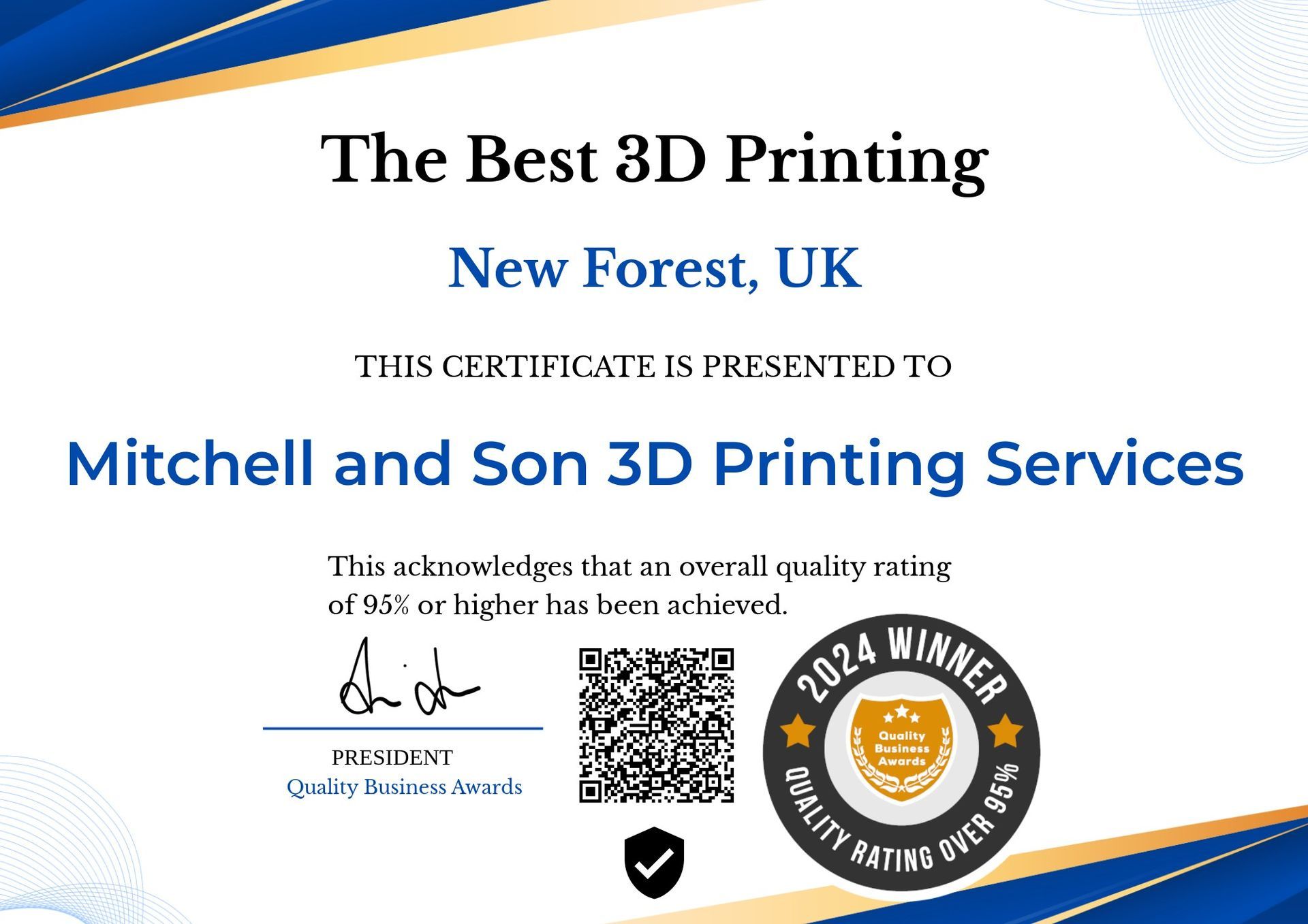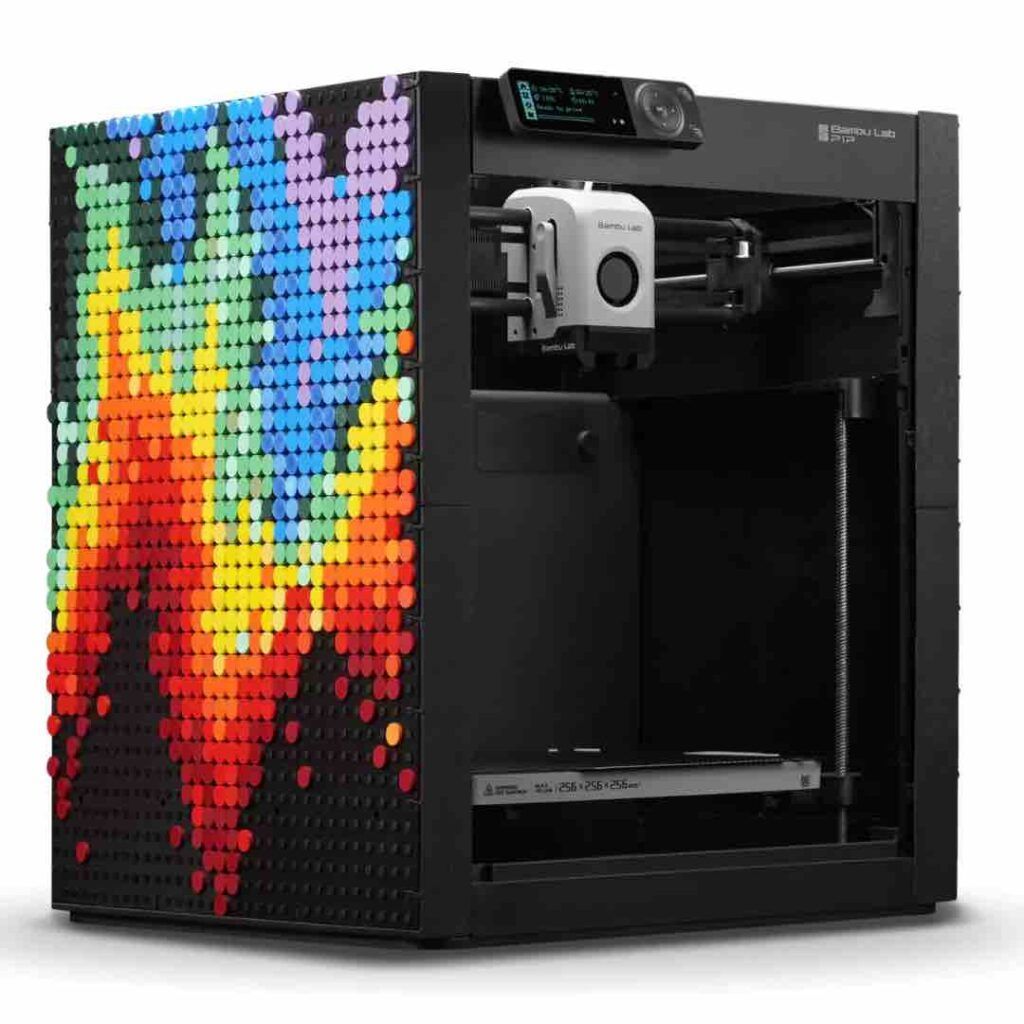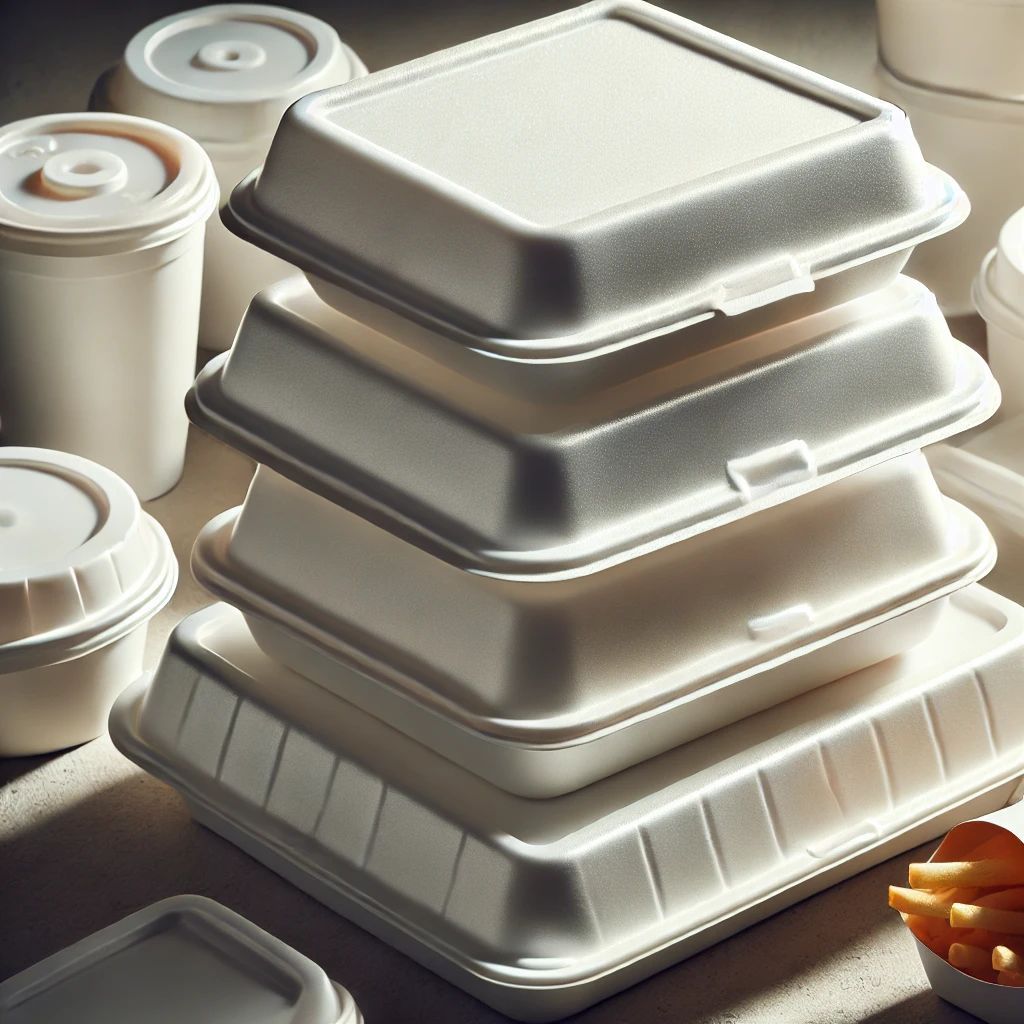3D Printer Servicing: Replacing and What Needs Cleaning?

In the world of 3D printing, ensuring that your 3D printer functions optimally is crucial to achieving high-quality prints consistently.
Just like any other machinery, 3D printers require regular servicing to maintain their performance.
In this comprehensive guide, we will delve into the intricate details of 3D printer servicing, covering what needs cleaning and what components may need replacement.
The Importance of 3D Printer Servicing
Before we dive into the specifics, let's emphasize why 3D printer servicing is so important. Think of your 3D printer as a precision instrument. Over time, wear and tear can occur, leading to a decrease in print quality and even the risk of malfunction. Regular servicing not only ensures that your prints remain flawless but also extends the lifespan of your machine.
3D printing has revolutionized various industries, from healthcare to aerospace. Whether you use a 3D printer for prototyping, production, or personal projects, maintaining its performance is paramount.
Let's explore the depths of 3D printer servicing and how it can benefit you.
Routine Cleaning for Optimal Performance
Cleaning the Build Plate
The build plate is where your 3D prints take shape. Over time, residue from filament and adhesives can accumulate, affecting adhesion and print quality. We'll guide you through the process of cleaning it effectively.
A clean build plate is the foundation of successful 3D printing. It ensures that the first layers of your prints adhere properly, preventing warping and misalignment. To clean your build plate, follow these steps:
- Safety First: Before you begin, make sure your 3D printer is powered off and cooled down to avoid any accidents.
- Remove the Build Plate: Carefully remove the build plate from your 3D printer. Refer to your printer's manual for instructions on this step.
- Scrape Off Debris: Use a scraper or spatula to gently remove any leftover filament or adhesive residue from the build plate. Be cautious not to scratch the surface.
- Clean with Isopropyl Alcohol: Dampen a clean cloth or paper towel with isopropyl alcohol (IPA) and wipe the build plate's surface. IPA helps dissolve and remove any remaining contaminants.
- Dry Thoroughly: Allow the build plate to air dry completely before reattaching it to your 3D printer.
Unclogging Nozzles
Clogged nozzles can be a frustrating issue. We'll show you how to clear them without causing damage to your 3D printer.
A clogged nozzle can lead to incomplete prints, underextrusion, or even failed prints. To unclog your nozzle, follow these steps:
- Heat the Nozzle: Preheat your 3D printer's nozzle to its normal printing temperature for the filament you use. This softens the clog.
- Manually Push Filament: While the nozzle is hot, gently push a piece of filament through the nozzle manually. This can help dislodge the clog.
- Cold Pull: Perform a cold pull or atomic pull by quickly cooling the nozzle down to a lower temperature. As the filament cools and solidifies, pull it out forcefully. This method can remove stubborn clogs.
Lubricating Moving Parts
To keep your 3D printer's moving parts operating smoothly, regular lubrication is essential. Learn which lubricants are suitable and how to apply them correctly.
Lubrication is crucial to reduce friction and wear on the moving parts of your 3D printer. It ensures that everything moves smoothly during the printing process.
Here's how to properly lubricate your 3D printer:
- Identify Lubrication Points: Refer to your 3D printer's manual to locate the points that require lubrication. Common areas include the linear rods, lead screws, and belts.
- Choose the Right Lubricant: Select a lubricant specifically designed for 3D printers, such as a PTFE-based grease or oil. Avoid using WD-40 or other general-purpose lubricants, as they may damage certain components.
- Apply Lubricant Sparingly: Use a small amount of lubricant on each designated point. Over-lubrication can attract dust and debris, causing more harm than good.
- Wipe Excess Lubricant: After applying the lubricant, wipe away any excess to prevent it from dripping onto your prints.
Proper lubrication will keep your 3D printer's movements precise and prevent premature wear on critical components.
Replacement Parts for a Well-Maintained 3D Printer
As your 3D printer ages, certain components may require replacement. Here are some key parts to keep an eye on:
Filament Extruder Replacement
When your extruder starts to show signs of wear, it's time to consider a replacement. We'll discuss the signs and how to swap it out.
The filament extruder is a critical component responsible for pushing filament into the hotend. Over time, it can wear out, leading to underextrusion, uneven flow, or complete failure.
Here's how to identify when it's time for a replacement and how to do it:
Signs of Extruder Wear:
- Filament Grinding: If you notice that the filament is being ground down or chewed by the extruder, it's a clear sign of wear.
- Inconsistent Extrusion: Uneven or inconsistent extrusion during prints can indicate extruder issues.
- Excessive Play: If the extruder assembly has excessive play or wiggles, it may be worn out.
Replacing the Filament Extruder:
- Prepare the Printer: Ensure your 3D printer is turned off and unplugged for safety.
- Remove the Old Extruder: Depending on your printer model, you may need to disassemble part of the printer to access the extruder. Refer to your printer's manual for guidance.
- Install the New Extruder: Carefully attach the new extruder, following the manufacturer's instructions.
- Calibrate and Test: After installation, recalibrate your 3D printer and run a test print to ensure proper extrusion.
Replacing the filament extruder can significantly improve your printer's reliability and print quality.
Hotend and Heater Block Replacement
A malfunctioning hotend can lead to poor print quality. Discover when it's necessary to replace it and how to do it safely.
The hotend is where the filament is melted and extruded onto the build plate. Over time, it can suffer from wear and tear, filament residue buildup, or even damage.
Here's how to determine if you need to replace your hotend and how to go about it:
Signs of Hotend Issues:
- Clogs and Jams: Frequent clogs or jams in the hotend can indicate problems.
- Inconsistent Temperature: If the hotend struggles to maintain a consistent temperature, it may need replacement.
- Filament Residue: Buildup of melted filament inside the hotend can affect print quality.
Replacing the Hotend:
- Safety First: Turn off your 3D printer and let it cool down completely.
- Detach the Hotend: Depending on your printer's design, you may need to disassemble the hotend assembly. Follow your printer's manual for guidance.
- Install the New Hotend: Carefully install the new hotend according to the manufacturer's instructions.
- Calibrate and Test: After replacement, recalibrate your 3D printer and perform a test print to ensure proper operation.
A new hotend can make a significant difference in print quality, especially if the old one was causing issues.
Replacing the Print Bed
If your print bed becomes damaged or uneven, it can affect adhesion and calibration. We'll guide you through the replacement process.
The print bed is the foundation for your 3D prints, and it needs to be flat and level. Over time, it can become scratched, warped, or damaged.
Here's how to determine if you need to replace your print bed and how to do it:
Signs of Print Bed Issues:
- Warped Surface: If your print bed is visibly warped or uneven, it can lead to adhesion problems.
- Deep Scratches: Deep scratches or gouges in the bed can interfere with print quality.
- Temperature Issues: Inconsistent heating or difficulty maintaining temperature may be due to a faulty bed.
Replacing the Print Bed:
- Safety First: Ensure your 3D printer is turned off and unplugged.
- Remove the Old Bed: Depending on your printer's design, you may need to disassemble part of the printer to access the bed. Follow your printer's manual for guidance.
- Install the New Bed: Carefully attach the new print bed according to the manufacturer's instructions.
- Level and Calibrate: After replacement, level the bed and calibrate your 3D printer to ensure accurate prints.
A flat and level print bed is essential for successful 3D printing, so don't hesitate to replace it if needed.
Upgrading to a New Print Head
Sometimes, upgrading your print head can dramatically improve your 3D printer's performance. We'll explore the benefits and steps to take.
The print head, also known as the nozzle assembly, plays a vital role in the quality and speed of your prints. Upgrading to a new print head can bring several advantages.
Here's why you might consider this upgrade and how to go about it:
Benefits of Upgrading the Print Head:
- Improved Print Quality: A new print head with better design and materials can lead to sharper, more detailed prints.
- Faster Printing: Upgraded print heads often have larger nozzles, allowing for faster print speeds.
- Compatibility with Different Filaments: Some upgraded print heads are designed to handle a wider range of filament types, including specialty materials.
Upgrading the Print Head:
- Research Compatibility: Check whether your 3D printer model allows for print head upgrades. Consult your printer's manual or manufacturer for information.
- Select the Right Print Head: Choose a print head that suits your specific printing needs, whether it's for precision, speed, or versatility.
- Follow Manufacturer Instructions: Install the new print head according to the manufacturer's guidelines. This may involve disassembling part of your printer.
- Calibrate and Test: After installation, recalibrate your 3D printer and perform test prints to ensure the new print head performs as expected.
Upgrading your print head can breathe new life into your 3D printer, making it capable of tackling more challenging projects.
Troubleshooting Common Issues
Regular servicing can prevent common 3D printing problems, such as:
Layer Misalignment
Learn how servicing can prevent layer misalignment, which can lead to structural weaknesses in your prints.
Layer misalignment, where each layer of your 3D print doesn't align properly with the previous one, can result in weakened structures and failed prints.
Regular servicing can prevent this issue by ensuring that all components are in good working order.
Preventing Layer Misalignment:
- Calibrate Regularly: Ensure that your 3D printer is correctly calibrated to prevent layer misalignment.
- Check for Loose Belts: Loose belts can lead to layer shifting. Tighten them as needed.
- Inspect Z-Axis Components: Make sure that the Z-axis components, including the lead screws and motor, are functioning smoothly without obstructions.
By addressing these factors during servicing, you can maintain precise layer alignment.
Print Head Jams
Discover how routine maintenance can minimize the risk of print head jams and nozzle blockages.
Print head jams occur when filament gets stuck in the hotend or nozzle, obstructing the flow of material. Regular servicing can prevent this frustrating issue by keeping the hotend and nozzle clean and free from debris.
Preventing Print Head Jams:
- Clean the Hotend: Regularly clean the hotend and nozzle to remove any filament residue.
- Use Quality Filament: High-quality filament is less likely to contain impurities that can lead to jams.
- Monitor Filament Flow: Keep an eye on the filament as it enters the extruder to ensure it feeds smoothly.
By following these preventative measures, you can significantly reduce the chances of print head jams.
Inconsistent Extrusion
Inconsistent extrusion can result in a flawed print. We'll explain how servicing your 3D printer can address this issue.
Inconsistent extrusion, where the amount of filament being extruded varies during a print, can lead to surface imperfections and structural weaknesses.
Servicing your 3D printer can help maintain consistent extrusion.
Maintaining Consistent Extrusion:
- Check Filament Path: Ensure that the filament path from the spool to the hotend is free from obstructions or tangles.
- Monitor Extruder Tension: Adjust the extruder's tension as needed to maintain even filament feeding.
- Clean Extruder Gears: Gears that push filament may accumulate debris over time; cleaning them can improve extrusion.
Regular servicing includes these checks to keep extrusion consistent throughout your prints.
Print Quality Issues
We'll explain how servicing your 3D printer can lead to consistently high print quality.
Print quality issues encompass a wide range of problems, from layer inconsistencies to surface defects. Servicing your 3D printer ensures that all components are in optimal condition, which directly impacts print quality.
Achieving High Print Quality:
- Regularly Clean Nozzle: A clean nozzle leads to smoother extrusion and better print quality.
- Check Belts and Bearings: Loose or damaged belts and bearings can lead to wobbly prints or layer misalignment.
- Calibrate and Level: Proper calibration and bed leveling are essential for achieving high-quality prints.
By addressing these factors during servicing, you can consistently produce high-quality 3D prints.
The Benefits of Professional Servicing
While many 3D printer owners prefer DIY servicing, there are compelling reasons to consider professional maintenance:
Expert Diagnosis
Professionals have the experience to diagnose issues accurately, saving you time and frustration.
Professional servicing offers the advantage of expertise. Experienced technicians can quickly identify and address problems that may not be obvious to a DIY enthusiast.
Their diagnostic skills can save you from lengthy troubleshooting and potentially costly mistakes.
When you choose professional servicing, you benefit from:
- Accurate Issue Identification: Professionals can pinpoint the root causes of problems efficiently.
- Expert Repairs: Technicians are trained to perform repairs and replacements with precision.
- Time and Stress Savings: Professional servicing eliminates the guesswork and uncertainty associated with DIY repairs.
Warranty Preservation
Some warranties require professional servicing to remain valid. We'll discuss why this matters.
If your 3D printer is under warranty, it's essential to follow the manufacturer's servicing guidelines. Many warranties stipulate that only authorized technicians can perform certain repairs or maintenance tasks. Failing to comply with these requirements can void your warranty.
Why Warranty Preservation Matters:
- Cost Savings: Warranty coverage can save you money on repairs and replacements.
- Peace of Mind: Knowing that your printer is protected can provide peace of mind.
- Manufacturer Support: Staying within warranty terms ensures access to manufacturer support and resources.
Before deciding on DIY or professional servicing, check your warranty terms and consider the potential consequences of voiding it.
Enhanced Printer Lifespan
Professional servicing can extend the life of your 3D printer, making it a wise long-term investment.
A well-maintained 3D printer can serve you for many years, providing excellent value for your investment. Professional servicing not only addresses current issues but also helps prevent future problems, ensuring your printer's longevity.
Benefits of a Longer Printer Lifespan:
- Long-Term Savings: Extending your printer's life means fewer replacements and upgrades, saving you money.
- Consistent Performance: A well-maintained printer delivers consistent, high-quality prints over time.
- Reliability: You can rely on your printer for important projects without worrying about breakdowns.
By investing in professional servicing, you can maximize the lifespan of your 3D printer and continue to enjoy its benefits for years to come.
DIY Servicing vs. Professional Maintenance
Should you service your 3D printer yourself or leave it to the experts? Let's weigh the pros and cons:
Cost Savings vs. Risk
Discover how DIY servicing can save money but also carry certain risks.
DIY Servicing Pros:
- Cost Savings: DIY servicing is often more budget-friendly as you don't need to pay for professional labor.
- Learning Opportunity: Performing maintenance tasks yourself can help you understand your printer better and improve your skills.
DIY Servicing Cons:
- Risk of Mistakes: DIY servicing can lead to errors, potentially causing more significant issues or voiding warranties.
- Time-Consuming: Learning and performing maintenance tasks can be time-consuming, especially if you're not experienced.
Skill and Experience Required
We'll discuss the level of skill and experience needed for effective DIY servicing.
DIY servicing can be rewarding and cost-effective, but it requires a certain level of skill and experience. Here's what you need to consider:
- Technical Knowledge: Successful DIY servicing relies on your understanding of your 3D printer's components, mechanisms, and troubleshooting techniques. The more you know, the more effectively you can maintain and repair your printer.
- Experience: Experience plays a significant role in DIY servicing. If you've been using 3D printers for a while and have tackled various maintenance tasks, you're likely to feel more confident in handling repairs and replacements.
- Learning Curve: If you're new to 3D printing, DIY servicing may involve a steep learning curve. It's essential to invest time in learning about your printer, its manual, and common issues and solutions.
- Risk Tolerance: DIY servicing carries some risk, particularly if you're inexperienced. Be prepared for the possibility of making mistakes that could lead to additional expenses or downtime.
- Tools and Resources: Ensure you have the necessary tools and resources for DIY servicing, including spare parts, lubricants, cleaning materials, and access to online resources or forums for guidance.
Ultimately, the decision between DIY servicing and professional maintenance depends on your comfort level, technical proficiency, and the specific needs of your 3D printer.
Maintenance Schedule for 3D Printers
To ensure your 3D printer's longevity, we'll provide a recommended servicing schedule:
Weekly Maintenance Tasks
Learn what tasks should be performed on a weekly basis to keep your 3D printer running smoothly.
Weekly Maintenance Checklist:
- Clean the Build Plate: Remove any residue from the build plate and ensure it's level and free from defects.
- Check Belts and Pulleys: Inspect the belts and pulleys for signs of wear or looseness. Tighten or replace them if necessary.
- Clean the Nozzle: Use a nozzle cleaning tool or a heat-resistant brush to remove any filament residue from the nozzle.
- Examine Filament Path: Inspect the filament path for obstructions or tangles, ensuring smooth filament feeding.
Performing these tasks weekly can help prevent minor issues from escalating.
Monthly Maintenance Checklist
Discover the essential monthly tasks to maintain your 3D printer's performance.
Monthly Maintenance Checklist:
- Lubricate Moving Parts: Apply lubricant to the designated points on your 3D printer, including linear rods, lead screws, and bearings.
- Check Print Quality: Run test prints and inspect the quality for any anomalies. Address any issues promptly.
- Inspect Wiring and Connections: Ensure that all wiring and connections are secure and free from damage.
- Clean Electronics: Use compressed air or a brush to remove dust and debris from the electronic components and fans.
Monthly maintenance helps identify and address potential issues before they become major problems.
Annual Overhaul
Learn what to include in an annual overhaul to give your 3D printer a comprehensive checkup.
Annual Overhaul Checklist:
- Replace Wearable Parts: Consider replacing components like the filament extruder, hotend, and print bed if they show significant wear.
- Calibrate and Level: Perform a thorough calibration and bed leveling to ensure accuracy.
- Update Firmware: Check for firmware updates and apply them to access new features and improvements.
- Deep Cleaning: Disassemble your 3D printer as needed for a deep cleaning, removing accumulated dust and debris.
An annual overhaul provides a comprehensive assessment of your 3D printer's condition and ensures it continues to operate at its best.
Tips for Prolonging 3D Printer Life
To wrap up our guide, here are some valuable tips for extending your 3D printer's lifespan:
Proper Storage
Store your 3D printer in a suitable environment to prevent damage from dust, moisture, and temperature fluctuations.
- Dry and Dust-Free Location: Keep your 3D printer in a dry, clean, and dust-free area.
- Cover When Not in Use: Use a dust cover or enclosure to protect your printer when it's not in operation.
- Avoid Humidity: Maintain an environment with stable humidity levels to prevent filament absorption and print issues.
Filament Selection
Choose high-quality filament and handle it with care to ensure smooth printing and long-lasting components.
- Quality Filament: Use reputable and high-quality filaments to reduce the risk of clogs and print defects.
- Store Filament Properly: Seal filament spools in airtight containers with desiccant packs to prevent moisture absorption.
- Handle Filament Carefully: Avoid kinking or bending filament, as this can lead to feeding problems.
Software Updates
Regularly update your 3D printer's firmware and software to access new features and improvements.
- Check for Updates: Periodically check for firmware updates from your printer's manufacturer and apply them as recommended.
- Explore New Features: Stay informed about new features or software enhancements that can improve your printing experience.
Conclusion
In conclusion, servicing your 3D printer is not an optional task; it's a critical aspect of maintaining print quality and machine longevity. Whether you choose to perform DIY servicing or seek professional help, the key is to stay proactive and consistent.
By following the maintenance schedule, troubleshooting common issues, and considering professional servicing when needed, you can enjoy reliable 3D printing and extend the life of your valuable machine.
FAQs about 3D Printer Servicing
How often should I clean my 3D printer's build plate?
Regularly cleaning your build plate is essential for good adhesion and print quality. Aim for cleaning it after every print job for the best results.
Can I use any lubricant for my 3D printer's moving parts?
No, it's essential to use a lubricant specifically designed for 3D printers, such as PTFE-based lubricants, to ensure smooth operation and avoid damage.
Is it possible to upgrade my 3D printer's print head for better performance?
Yes, upgrading your print head can significantly improve print quality and speed, but ensure compatibility with your printer model before making any changes.
What should I do if my 3D printer's nozzle gets clogged frequently?
Frequent nozzle clogs can be caused by various factors. Regularly cleaning and maintaining your nozzle can help, but if the issue persists, consult a professional for further diagnosis.
How can I tell if my 3D printer needs professional servicing?
If you notice consistent print quality issues, strange noises, or unusual behavior from your 3D printer, it's a sign that professional servicing may be required.












